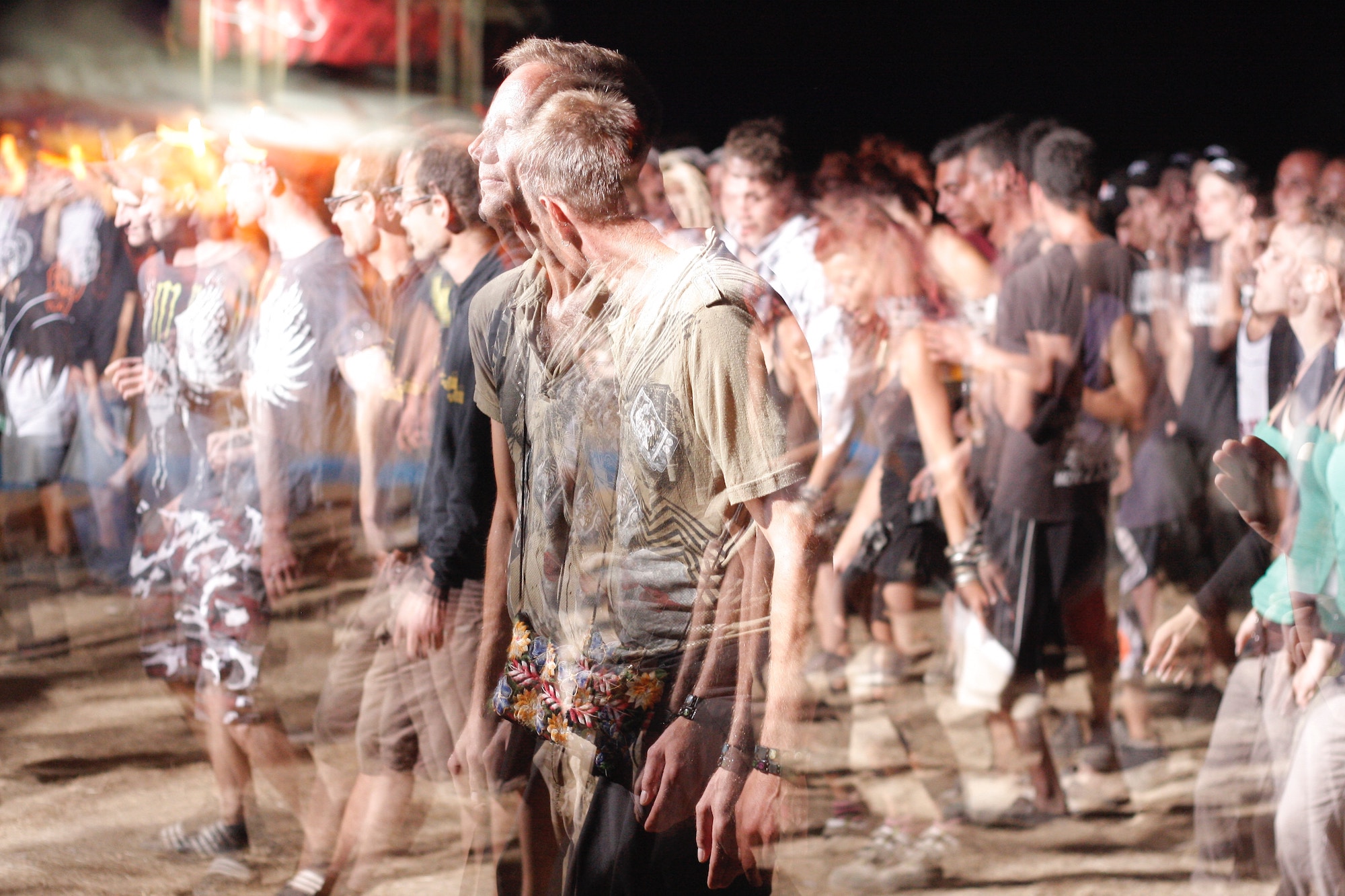Hallucinogenics: You’re Hallucinating If You Think These Aren’t Bad For You

Hallucinations happen as a side effect of a drug or medication given to a patient. However, there are plenty of drugs out there that can cause hallucinations even if the person taking it does not have any illness. These are commonly known as hallucinogens.
What is Hallucination?
Hallucinations are defined as things you see, feel, hear, taste or smell that are not really there. This usually happens when our five senses are affected and among all these, the most common are auditory and visual hallucinations. It can happen when a person is under the influence of drugs, particularly psychedelic and hallucinogenic drugs. Besides being caused by drugs, it can also be a symptom of psychosis, like bipolar disorder and schizophrenia.
Anyone can suffer from hallucinations, especially if they are under extreme mental or physical stress. A person who has not slept for days can also experience the same sort of phenomenon.
What are Hallucinogens?
Hallucinogenics are a diverse group of drugs that can alter a person’s perception of their own surroundings. It can also affect their thoughts and feelings, which is why hallucinogens are grouped into two categories: hallucinogens and dissociative drugs. They can cause hallucinations, images or sensations that are not real but feel real to the user. Among the two groups, dissociative drugs can often cause the user to feel disconnected from their environment or even body, giving them the sense that they are ‘out of control’.
Hallucinogenics are usually derived from mushrooms or plants and can be synthetic or man-made. All throughout history, hallucinogens have been used for healing or religious rituals. However, over the years, hallucinogens have started to be abused as recreational substances (like LSD or PCP). Some claim to have spiritual experiences while under the influence while others use hallucinogens in order to ‘feel different’ or less stressed.
Most Common Types of Hallucinogenics
There are many hallucinogens out in the market today, but the following are the most common drugs purchased by users:
- D-lysergic acid diethylamide or LSD – Perhaps the most common among all hallucinogens, LSD is a usually white, clear, and odorless substance derived from a fungus. This type of fungus is believed to grow on grains and rye. Among the most common names that LSD is known by include dots, mellow yellow, acid, or blotter acid.
- 4-phosphoryloxy-N, N-dimethyltryptamine or Psilocybin – This drug is derived from mushrooms found in subtropical and tropical regions of Mexico, South America and even in the United States. It is also known as magic mushrooms, little smoke, or shrooms.
-
- DMT or N, N-dimethyltryptamine – I usually found in some plants in the Amazon. It is found in a plant called Ayahuasca, known to locals as a plant where tea can be made from. When this drug is taken, it is known as aya, hoasca or yage. While this drug is found in plants, it can also be made in a laboratory. The Synthetic form of DMT, or popularly known as Dimitri, is a white crystalline powder that users smoke to hallucinate from.
- Peyote or mescaline – Is usually a spineless cactus with mescaline. It can also be made synthetically and is usually known as buttons, mesc, or cactus.
- 251-NBOMe – Is a drug made in the lab which has similar effects to LSD and MDMA, but is much more dangerous because of its potency. This was initially developed to be used in brain research but was later sold on the streets as recreational illicit drugs. It is commonly known as the N-Bomb or 251.
Most Common Types of Dissociative Drugs
Dissociative drugs are another type of hallucinogen that is deadlier than most. Here are the most common types:
- Phencyclidine or PCP – Mostly known as ozone, love boat, rocket fuel, superweed, hog, or embalming fluid, PCP was developed in the 1950s and was used as general anesthesia for surgery. It is usually in liquid form or powder and it can be smoked, snorted, injected or swallowed. Some users mix this powder with marijuana, parsley, or tobacco.
- Salvia divinorum – Commonly known as the diviner’s sage, Sally D, Maria Pastora, or Magic Mint, Salvia is a psychoactive plant found mostly in South Mexico, Central, and South America. It is ingested by drinking the extracted juices from the herb or by chewing on the leaves. When dried, it can be smoked or inhaled through vapor.
- Ketamine – Is well-known for its name Special K, K, or Cat Valium. It is a dissociative drug used for anesthetic purposes in both humans and animals, however, it is also known to be sold on the streets are an illicit recreational substance. It is injectable liquid, but when in powder form, ketamine can be compressed into pills or snorted. Because this drug is tasteless and odorless, it can result in temporary amnesia and is often used as an additive to drinks by those who commit sexual assaults.
- Dextromethorphan or DXM – Also known for its name, Robo, DXM is a cough expectorant and suppressant. It can be found in many over-the-counter cough and cold medications which are often abused by young adults. These can also be found in antihistamines and decongestants.
4 Kinds of Hallucinations
There are four types of hallucinations, which are usually related to our senses. When a person takes a hallucinogenic, they may experience two or more types of hallucinations at once, depending on the drug they have taken:
- Visual hallucinations – When visual hallucinations occur, there is usually a mild distortion of what the person sees. Most of the time, these mild distortions can be pleasant but there are also times when this can be an ugly experience, especially if the person has taken hallucinogens for the first time. Most visual hallucinations include:
-
- Seeing vivid colors and halos around objects.
- Seeing things more clearly.
- Seeing things from a different angle.
- Faces appear distorted, artificial, or even inanimate.
- Seeing walls that appear to be “breathing” or “alive”.
- Seeing different patterns that are not apparent before.
- Seeing people or objects in a different picture which can sometimes lead to confusion.
These hallucinations are the best sign that a person has taken a hallucinogenic drug like LSD. However, these hallucinations may vary depending on the type of LSD they have taken. People who see visual hallucinations are usually those who took low doses of LSD but it could be on repeated times. Often times, people who are hallucinating think they are an alien in a world that only they can see. It could a pleasant or unpleasant experience and it can quickly shift in a negative way.
- Auditory hallucinations – These types of hallucinations happen when the user starts to hear voices where there are none. It could be loud, intimidating, quiet, or friendly. This type of hallucination is most common in people with schizophrenia where they can hear distorted sounds as well as an intensity of audio experiences when listening to music. Auditory hallucinations are also an effect of hallucinogenic drugs.
- Olfactory and taste hallucinations – When we say olfactory, this usually refers to smelling something that is not there. Taste and olfactory hallucinations are rare, but they do happen. This usually occurs when the person has epileptic seizures or brain damage. It could be harder to detect, especially if it overlaps with delusions.
- Tactile hallucinations – Are feelings of sensations even when there is nothing there. Most of the time, it is an unpleasant experience for users and those who have taken psychoactive drugs. The hallucinations could also vary depending on the effects of the drugs that the person took. Tactile hallucinations can be commonly seen among people who use crystal meth. Often times, they experience sensations like bugs crawling underneath their skin which causes them to scratch or pick holes in their skins as if they are trying to remove the “bugs”. This is why crystal meth users don’t always look appealing due to their sores, scars, and infections scabs.
The Bottom Line is … Don’t Take Hallucinogens
If you think hallucinogenics are okay, then think again. When a person takes a hallucinogen, whether it’s for short or long term, the consequences still remain. These drugs can destroy your perception of reality as well as brain activity. You could suffer from confusion, depression, sleep deprivation, mood swings, paranoia, and even death. So if you or someone you know is addicted to the drugs mentioned above, the best advice we could give is to stop and get the treatment you or a loved one needs. Keep in mind that no matter what the problem is at hand, taking drugs cannot solve it. It will just worsen the situation and could affect you and everyone around you.




